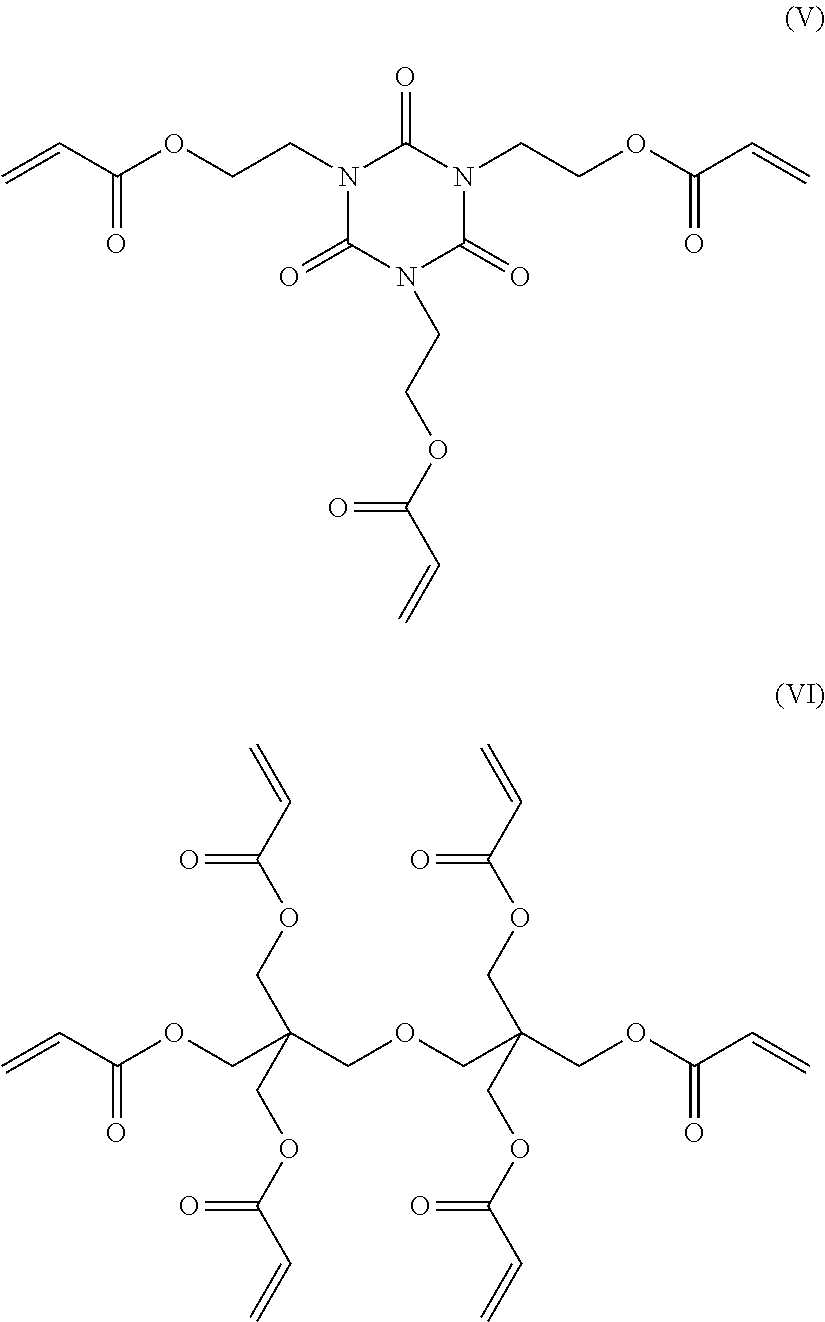Easily removable dental curable composition
a composition and dental technology, applied in the field of curable compositions, can solve the problems of disintegration of dental roots, inability to completely cure the root canal, and inability to completely seal the root canal wall, so as to prevent the fall or leakage, easy to remove, and easy to remove dental.
- Summary
- Abstract
- Description
- Claims
- Application Information
AI Technical Summary
Benefits of technology
Problems solved by technology
Method used
Image
Examples
example 1
[0137]A liquid was prepared by dissolving 5 parts by weight of 4-methacryloxyethyl trimellitate anhydride (4-META) which is solid in 95 parts by weight of methyl methacrylate (MMA). Right after 0.09 g of this liquid and 0.006 g of tributylboron (TED, partial oxide of B(C4H9)3 loaded with about 0.3 mole / mole oxygen) were mixed together, 0.075 g of zirconium oxide (particle diameter of 0.005 to 30 μm), 0.015 g of polymethyl methacrylate powders (number average molecular weight of 40,000, weight average molecular weight of 400,000, particle diameter of 36 μm, durometer D hardness of 66, to be referred to as “PMMA” hereinafter) and 0.02 g of ethylene vinyl acetate copolymer powders (Ultrasene; vinyl acetate content of 20%, average particle diameter of 62 μm, durometer A hardness of 85, to be referred to as EVA hereinafter) were added to the above mixture and mixed together at room temperature (24° C.). This slurry was used to carry out a micro-tensile test, a marginal sealability test, ...
example 2
[0138]Right after 0.09 g of the liquid prepared in Example 1 and 0.006 g of TBB were mixed together, 0.058 g of zirconium oxide, 0.012 g of PMMA powders and 0.04 g of EVA were added to the resulting mixture and mixed together at room temperature. This slurry was used to carry out the same tests as in Example 1. The results are shown in Table 1.
example 3
[0139]A liquid was prepared by dissolving 5 parts by weight of 4-META which is solid in 91.5 parts by weight of MMA and 3.5 parts by weight of glycerin dimethacrylate (GDMA). Right after 0.09 g of this liquid and 0.006 g of TBB were mixed together, 0.075 g of zirconium oxide, 0.015 g of PMMA powders and 0.02 g of ethylene propylene terpolymer powders (Mitsui EPT; average particle diameter of 216 μm, durometer A hardness of 60, to be referred to as EPT hereinafter) were added to the resulting mixture and mixed together at room temperature. This slurry was used to carry out the same tests as in Example 1. The results are shown in Table 1.
PUM
| Property | Measurement | Unit |
|---|---|---|
| particle diameter | aaaaa | aaaaa |
| particle diameter | aaaaa | aaaaa |
| chain length | aaaaa | aaaaa |
Abstract
Description
Claims
Application Information
 Login to View More
Login to View More - R&D
- Intellectual Property
- Life Sciences
- Materials
- Tech Scout
- Unparalleled Data Quality
- Higher Quality Content
- 60% Fewer Hallucinations
Browse by: Latest US Patents, China's latest patents, Technical Efficacy Thesaurus, Application Domain, Technology Topic, Popular Technical Reports.
© 2025 PatSnap. All rights reserved.Legal|Privacy policy|Modern Slavery Act Transparency Statement|Sitemap|About US| Contact US: help@patsnap.com



